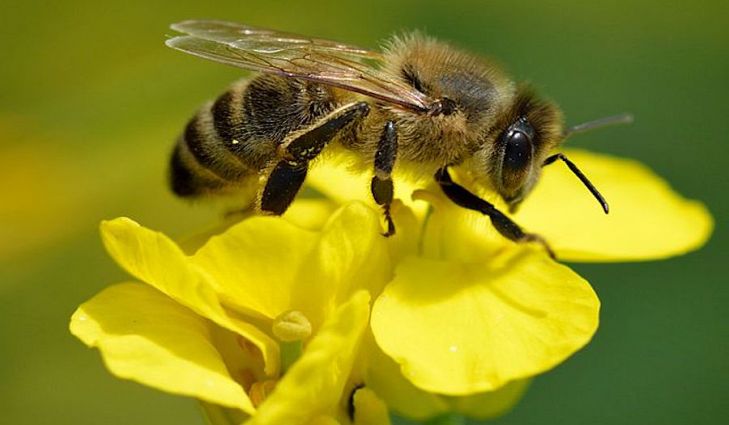A new study results show that ground-nesting bees might be exposed to pesticides in more ways than we thought, and it could impact their development seriously.
The research, published in Nature’s Scientific Reports, looks at the non-target effects of pesticides on ground-nesting bees, a group that actually makes up the majority of bee species. Non-target effects refer to the effects on organisms other than the ones intended. Much of the research currently available on non-target effects of pesticides has been limited to honey and bumble bees and their exposure to pesticides when collecting pollen and nectar.
While these previous studies have shown that pesticide consumption by honey and bumble bees can have important ecological consequences, this new study is one of the first of its kind to determine the effects of contact with pesticides, such as those that occur in soils, that other bee species might encounter.
Scientists say that this piece of work is very important because it’s one of the first studies to look at realistic concentrations of pesticides that you would find in the soil as a route of exposure for bees. It’s a very under-explored route, especially for some of the more solitary species that nest in the ground.
A key difference between ground-nesting bees and their honey and bumble bee cousins is their smaller nest sizes (both in size and number of bees) which are made by digging into the soil. Bee species that nest this way can stay in the ground up to 49 weeks out of the year, emerging for only 3 weeks to forage, mate, and lay eggs. This leaves a lot of time for the bees to be exposed to the chronic, low levels of pesticides found in the soil after agricultural land use.
The researchers were particularly interested in a class of pesticides called neonicotinoids. Derived from nicotine, neonicotinoids are widely used for their effectiveness against insects such as Japanese beetles and emerald ash borers, but they can be toxic to pollinators. They also have a long half-life, meaning they can persist in the soil for long periods of time.
When the bees percieved neonicotinoids in the lab, the scientists looked at levels similar to those found in the field. Results showed that females grew larger and did not live as long, while males were smaller and lived much longer. This conclusion suggests that chronic and low-level exposure to pesticides might cause a hormetic response in bees, where, at low levels of pesticide exposure, bees appear to benefit in small ways. However, the long-term impacts of some of these changes might not be readily apparent. The researchers state that these lower pesticide doses are leading to changes in the bee’s development, such as diverting energy from normal developmental processes to fortify physical and biochemical barriers to counter the effects of the pesticide.



